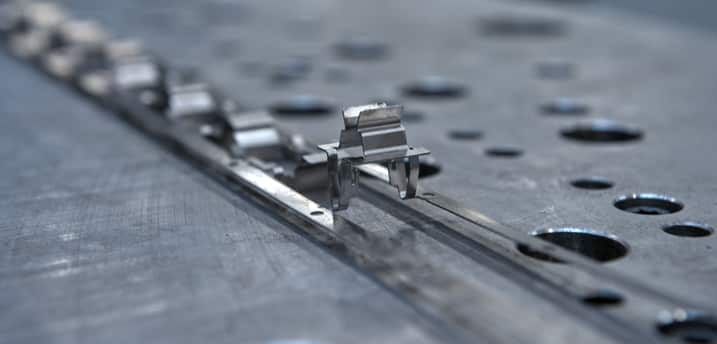
In order to produce technical springs in their almost unmanageable variety of applications in a purpose-optimized and always state-of-the-art manner, you have to be very familiar with the procurement of optimal materials and components as well as with all production processes. In order to meet the highest quality standards, the lasering, punching, forming and assembly of technical springs requires not only the use of the latest technology but also the associated special skills of the employees.
Contents
The well-known sentence from the theory of good design applies in particular to the highly diversified application possibilities of technical springs. Whether form spring, flat spring, spring clamp or spring clip: The starting point for constructive considerations for an individual solution – whether highly complex or even very simple – is always the required functionality. It has to fit optimally into the surrounding geometry of components. The exciting question is in which form the spring achieves the highest efficiency value. In the context of the overall product or the overall machinery in which the spring works, sustainability and ecology also play their role. The form “follows” more criteria than just its technical function.
The production of individual shaped springs is complex. Complex forms, which are often used in mechanical engineering or in precision engineering or electrical engineering as well as in medical technology, do not allow for simple calculation and design. In this respect, technical know-how and current calculation methods are required so that the appropriate manufacturing processes can be used. It is advisable for customers to order detailed documentation of all factors involved in production, which enables the knowledge gained to be used in subsequent designs and saves time. The more demanding the requirements are, the more effective the documentation will be in subsequent processes.
As straightforward as the manufacturing processes for technical springs are in principle, their design is limitless. As a rule, pure stamping, bending and laser cutting processes are used at the beginning, which then lead to forming by bending, embossing, edging or deep-drawing in one or more further steps. With this keyboard of technical molding processes, almost countless products can be created that combine maximum functionality in the smallest of spaces. The surface treatments specialize the spring for its very special purpose.
Trowalizing, vibratory finishing, phosphating, blackening, galvanizing and painting are appropriate processes that should be part of the tools of every manufacturer of technical springs.
Competence in all areas of the overall production package determines the efficiency and sustainability of the individual technical springs. At Schaaf you play it safe if you want to find the concentrated knowledge about materials and materials as well as the most diverse manufacturing processes in-house. Of course, this also implies the presence of the most modern machinery, with which the supposedly unsolvable problem is confronted with a product that contains an individual, sustainable and economically convincing solution.
Bitte geben Sie hier ihre Suchanfrage ein:
